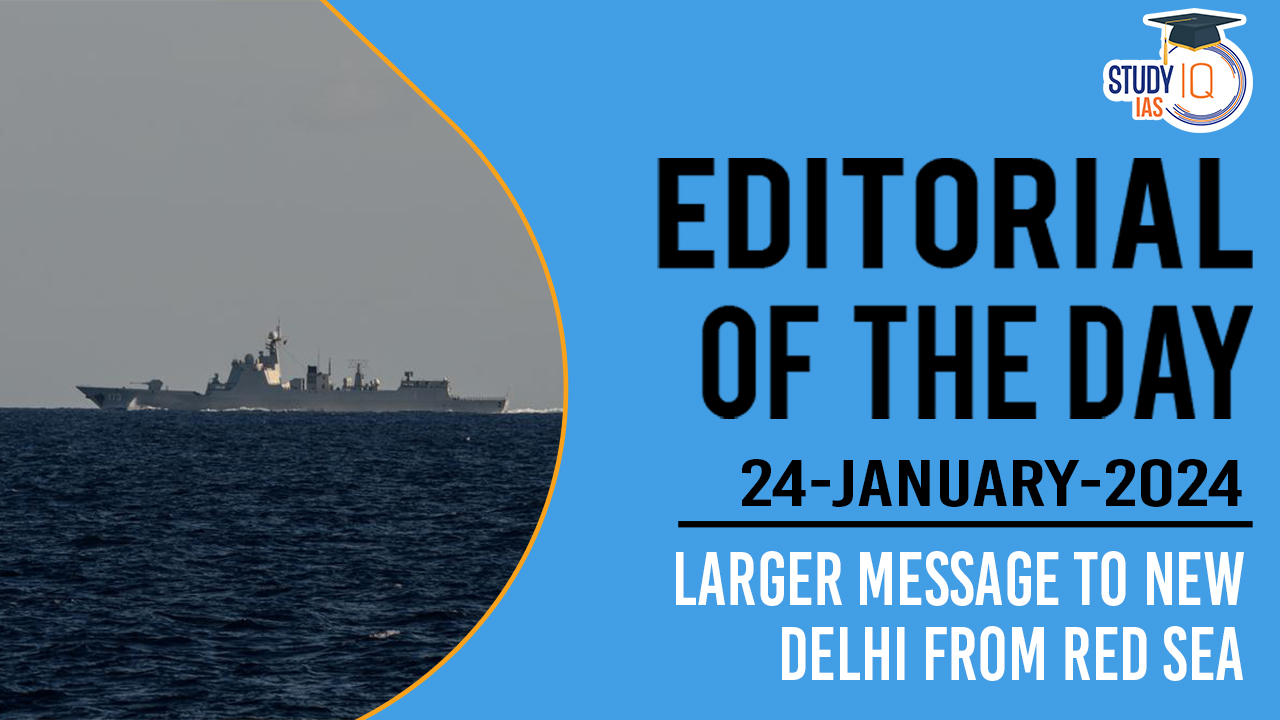Table of Contents
Context: The article discusses India’s maritime strategy in response to regional security dynamics, emphasising the need to counter Chinese influence and secure its interests in the Indo-Pacific.
Background
- The Indo-Pacific region is witnessing a significant geopolitical transformation, with increased assertiveness from China and Pakistan, challenging India’s traditional influence and strategic interests.
- The recent competition in maritime security is highlighted by the naval exercises, such as the ‘Clemenceau 21’ with the French Navy, involving the Indian Navy, and the UAE, the U.S., and other predominantly Indian Ocean forward nations.
Recent Developments
- India deployed the guided-missile destroyer INS Mysore, the INS Kiltan, and INS Kavaratti in the Red Sea region.
- There was an attack on commercial ships (MV Chem Pluto and MV Sai Baba) in the Red Sea attributed to the Houthi insurgency, reflecting the volatile security situation in the region.
- India faces a two-front challenge with both China and Pakistan, complicating its security calculations.
Strategic Considerations for India
- Naval Presence and Expansion:
- India needs to rethink its maritime grand strategy, which goes beyond the traditional anti-piracy roles and into a more significant regional presence.
- The expansion of naval bases and operations, such as India’s plan to construct a navy base in the Seychelles, indicates a shift towards a more assertive maritime posture.
- Chinese Influence:
- China’s Belt and Road Initiative (BRI) and the Maritime Silk Road pose direct challenges to India’s influence in the Indian Ocean Region (IOR).
- The expanding Chinese naval presence, including the reported establishment of a base in Djibouti and a potential base in Pakistan’s Gwadar, sends a clear signal to India about the changing power dynamics.
- Global Attention and Alliances:
- The international community, including major powers like the U.S., Japan, and Australia, are closely monitoring the situation.
- India must navigate its role and strategic partnerships, considering initiatives like the Quadrilateral Security Dialogue (Quad) and Operation Malabar.
- Economic and Trade Implications:
- Ensuring freedom of navigation and safeguarding commercial interests in the Red Sea and the IOR is crucial for India’s trade routes.
- There is an increased focus on bolstering relations with West Asian and African countries to secure economic and strategic interests.
- Policy Adaptation and Collaboration:
- India is prompted to reassess its foreign policy and military strategies to adapt to the new two-front situation.
- Collaborations with other nations in the IOR are necessary to create an influential counter to China’s increasing dominance.
Recommendations
- India should invest in a comprehensive and well-thought-out Indo-Pacific strategy that goes beyond immediate concerns and looks towards a sustainable long-term policy.
- Strengthening alliances with countries in the IOR and beyond, with a focus on maritime security, economic cooperation, and diplomatic outreach.
- Development of a modern naval force that can respond to diverse challenges, including humanitarian assistance, anti-piracy operations, and strategic dominance.


 UDAN Scheme, Objectives, Funding and Ach...
UDAN Scheme, Objectives, Funding and Ach...
 Indus Water Treaty 1960 Suspended by Ind...
Indus Water Treaty 1960 Suspended by Ind...
 5 Years of SVAMITVA Scheme and Its Benef...
5 Years of SVAMITVA Scheme and Its Benef...





















